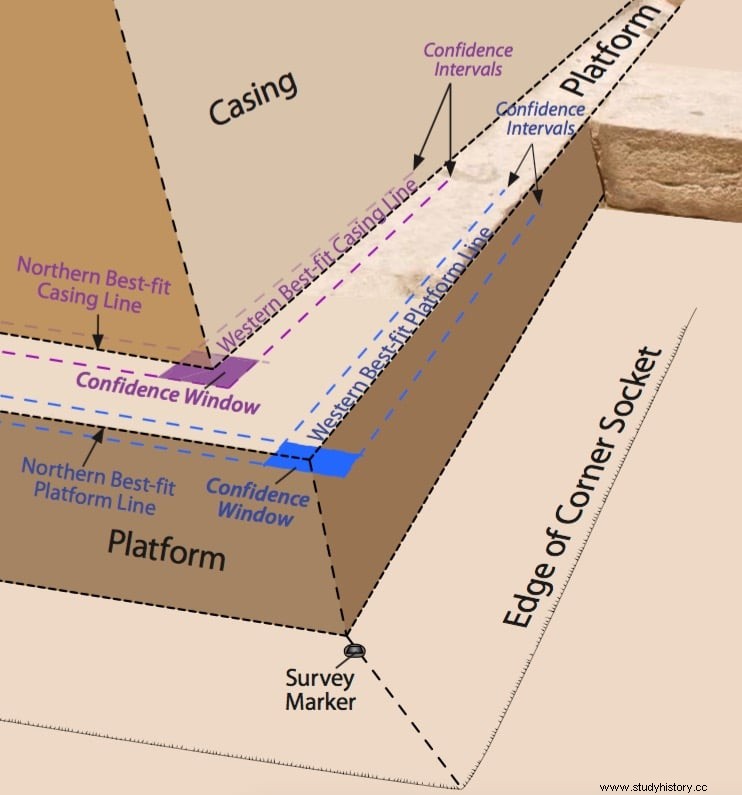A study carried out in 2016 by the North American foundations Glen Dash Research and Ancient Egypt Research Associates found that the base of the famous Great Pyramid of Giza is not a perfect square . Due to a measurement error made by its builders more than 4,500 years ago, its western side is longer than its eastern side.
The researchers were studying what the original appearance of the structure would have been, before its outer layer of white limestone completely disappeared. Built in the time of Pharaoh Cheops, the pyramid had a different appearance than it does today. Over the years, that outer layer of limestone was removed, probably to be used in other construction projects.
To carry out their study, the research teams took measurements looking for marks that would reveal where these outer cover stones could have been placed. . 84 points were found along the 920 meter perimeter that revealed the location of the structure's original edges. Most of them located in the center of each of the faces, not being able to find the original corners.

Placing these points on a grid, a linear regression model was used to calculate the original length of each side, resulting in the West side being 14.1 centimeters longer than the East . It is not that it is an exaggerated error, considering the total size it could be said that it is almost close to perfection. But the fact is that the calculation error exists.
The conclusions of the researchers, whose measurement work can be consulted on the Dash Foundation website, once again insist that the Egyptians who built the pyramids had skills that were certainly advanced for their time. Now they hope to determine how they were able to perform such precise calculations while also learning about the tools and technology available to them.
